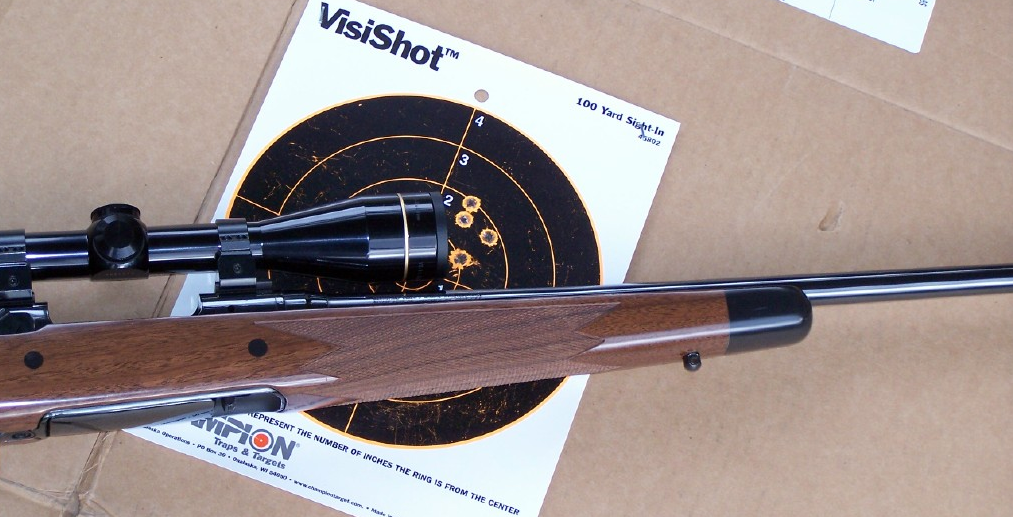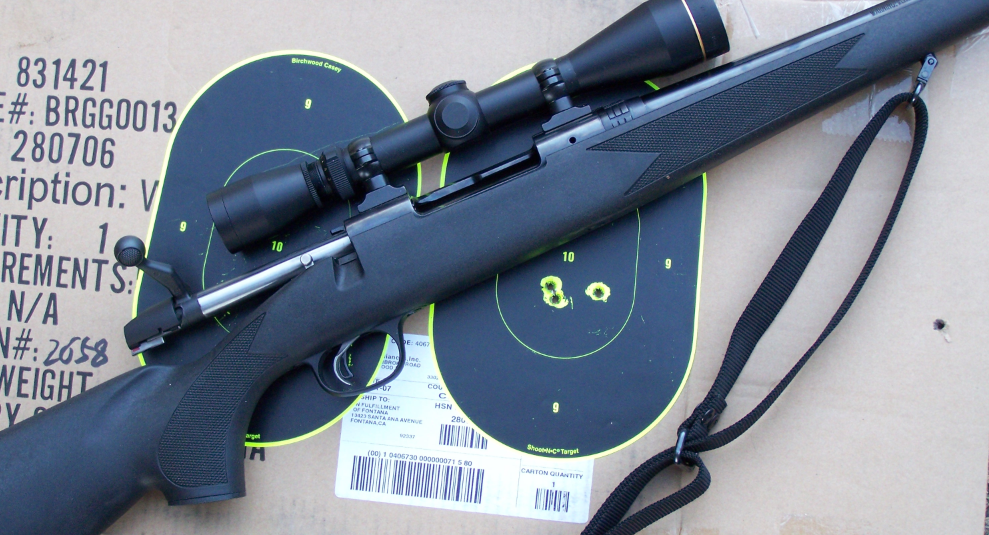Time for a Little Group Therapy
Complaining or simply beating up on yourself about a shot you missed last fall is not going to solve your problem. June is here, and with it are those long, lazy, mild late spring and early summer evenings that you can spend at the range, and if you’re lucky, you’ll bump into old pals and enjoy some therapeutic conversation and trigger time.
Making excuses for not being able to take this time seems to be a favorite pastime of people determined to become vegetarians and just go camping with guns in the fall. For the rest of us, however, putting meat in the freezer and notches in that tag requires more than just sitting around thinking about it until the night before the fall opener.
First item of business: Clean your rifle. Now. Inside and out. There’s nothing like a bath of Hoppe’s No. 9 or Outer’s Nitro Powder Solvent to get the gunk out of your gun. Pull the stock and clean the action and trigger group. You don’t have to be a gunsmith for this; just get some aerosols and go to work, preferably outside.

He subsequently clicked the crosshairs left a half-inch after this photo was taken. Couple of months later, he was on the Snake River, cleaning a 4×5 mule deer buck.
Item No. 2: Check your scope mounts and bases. If you missed an easy shot, it just might be that one of your bases has come loose. That happened to me once, about five years ago. Couldn’t get my rifle to zero all of a sudden, and this was with fresh ammunition I had only just loaded up at the bench. Sure as hell, one of my bases was just a teensy bit loose. I got out the gunsmith gear, tightened the screw down and dropped on a dab of clear nail polish.
Item No. 3: I just mentioned it. Get fresh ammunition. If you don’t reload, get down to the store and stock up. There’s work to be done. Be sure to stick with one load. If you plan to hunt with, say, a .30-06 with 165-grain bullets, then sight your rifle in with the same ammo. Putting your gun into zero with one type of ammunition and then hunting with something different is going to mess you up, maybe just enough to miss.
Item No. 4: Also from the “This happened to me” file comes this bit of advice: If your rifle barrel is supposed to “float” free of the wood stock and doesn’t when you run a dollar bill down the underside, between the bottom of the barrel and the stock, and the bill doesn’t slide all the way up to the receiver, you need to lightly sand the barrel channel out, coat it with linseed and/or tung oil, allow it to dry and make sure the barrel does not contact the wood.
SCOPE IT OUT!
One more thing is critical. Make sure your scope is mounted properly, and that means making sure the crosshairs are straight up and down, and flat one side to the other. A few years ago, I helped someone zero a rifle with which she was having trouble. Piece of cake, because she’d gotten the gun as a package and the scope was tilted off-center. You can’t really zero a gun that way.
We rotated the scope until the crosshairs were where they belonged and, voilà, five rounds later the rifle was zeroed. If you’re careful with a rifle, the zero shouldn’t change from year to year. Use a good sandbag rest under the stock and under the butt. This steadies the rifle for a precise shot. Set a target at 25 yards and 100 yards. Fire one round at the close target, let the barrel cool for a minute and fire again, and if it is off right, left, up or down, adjust accordingly.
Remember, a rifle that adjusts a ¼ inch at 100 yards for each click will need to adjust four clicks at 25 yards. If you have adjusted correctly, the third shot at 25 yards should be in the X-ring. Now, shift out to the 100-yard target and expect the bullet impact to be slightly off, probably on the low side, but that’s not always guaranteed. Fire a second shot and if the bullets impact close to one another, take note of the impact point and adjust the scope as needed while the barrel cools.
THE COLD BARREL
It is important to let the barrel cool, for a number of reasons. The most important of these is that out in the field, your first shot at game will be from a cold barrel. Also, you can damage a rifle by making the barrel so hot you can’t touch it. Save your rifle barrel and do this process slowly.
If your first two shots landed low an inch or so but windage is fine, run your elevation up eight clicks and fire again. This should solve your problem. Now set the rifle aside with the action open and the muzzle upwards on a rack while you trot downrange and change targets. Save your first target to study back at the bench as you get ready to fire again.

If you plan to be hunting an area where shots at game may be at 250 to 350 yards, prepare to do the following. Fire one or two more rounds to make sure the rifle is in the X-ring with the new target. It should be. Now, click up eight to a dozen clicks, which should put the bullet impact 2 to 3 inches high at 100 yards, but – depending upon the caliber and velocity – it should then strike pretty close to dead on at about 250 to 300 yards. Where I hunt over on the Snake River, I’ve shot deer out to about 400 yards. My -06 was zeroed to shoot 3½ inches high at 100 yards using a 180-grain Nosler AccuBond ahead of a max charge of Hodgdon Hybrid 100 V ahead of a standard large rifle primer. Bingo!
RETURN TRIPS
Don’t think this gets you ready for fall. Go home, clean the rifle, put it away and then in July, head back to the range. The rifle should put shots right where you were putting them at the initial sight-in session. Set aside a date in August and again in September for the same purpose.
Even if you fire only a couple of shots at each sitting, you will know that the rifle is retaining zero and you will be all set when the season arrives. Remember, this is a “group effort.” A rifle with a good barrel and scope combination should be able to produce 1- to 2-inch groups consistently at 100 yards. Not everyone is capable of shooting three-shot strings into a hole that can be covered by a quarter, but take my word on this: If your bullet strikes an animal within an inch or two of where you want it to strike its vitals, that animal is headed for the meat locker. What is a good group? As I said, 1 to 2 inches is nothing to complain about. A three-shot cluster that looks like a cloverleaf?
Save that target and frame it. CS
Story by Dave Workman


